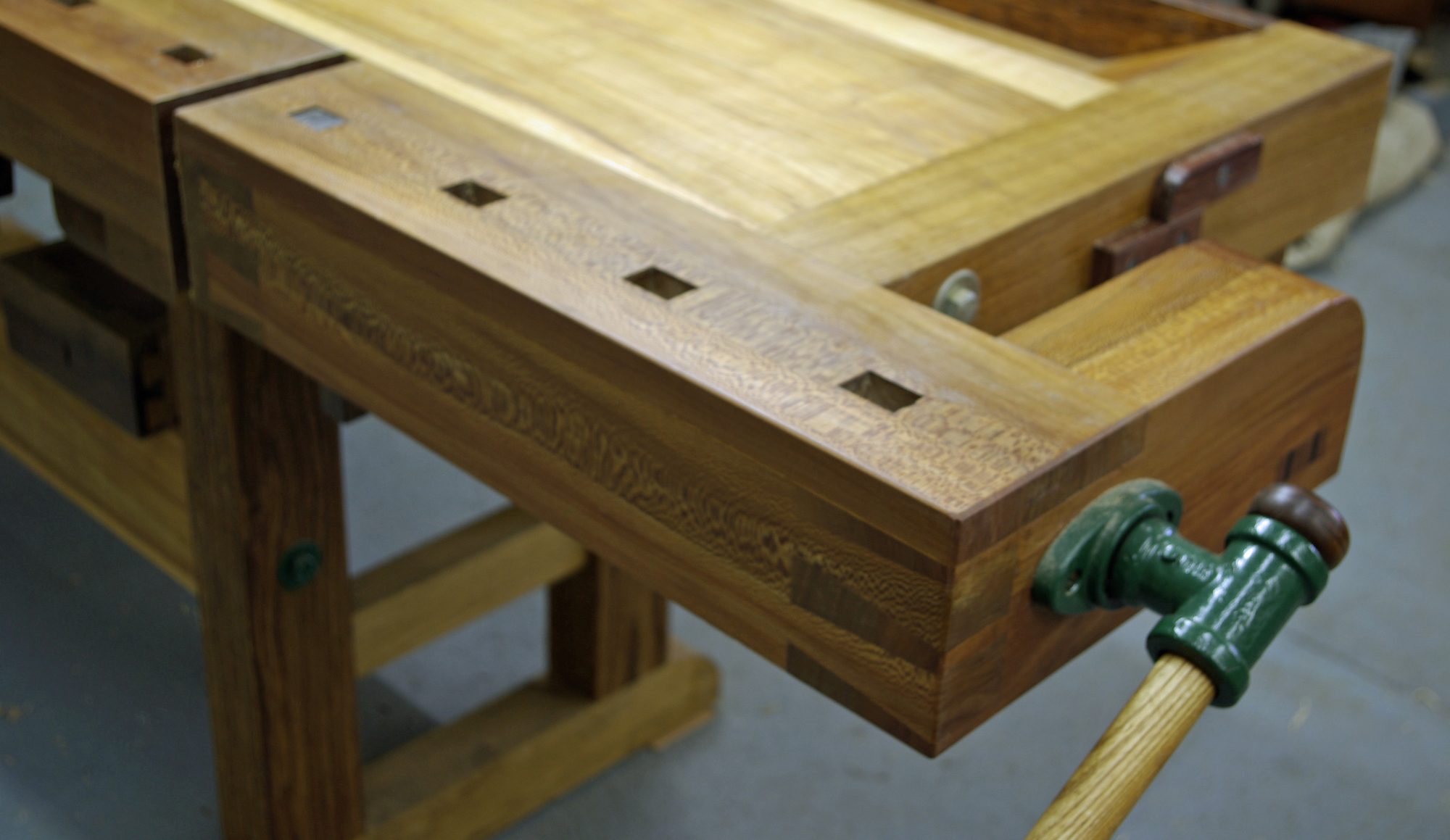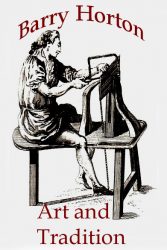
While honing some chisels the other day, I got to thinking about sharpening edge tools in general. A fine sharp edge is essential if we are to do fine work with ease. A fine edge should leave a polished surface that needs little or no further work before receiving a finish. I’m not a great fan of abrasive use before the use of a finish. The dust produced tends to clog the pores of the wood and no matter how fine the abrasive may be, the micro scratches break up the refracted light upon the surface. The result is a duller appearance. The fine edge of a well honed plane blade or chisel by contrast will leave a sheen that comes alive as light hits the imperceptible deviations left by good hand work. This gives character and soul to the finished piece that attracts attention and interest. Often enticing the hand of an admirer to reach out and caress the surface. If this is the sort of work you do, or aspire to do, it will no doubt influence your choice of sharpening method. God as they say is in the detail.
The sharpening of edge tools is probably one of the most discussed topics in woodworking, nearly everyone has a different take on the subject. Oil stone, water stone, or diamond. Then there are other methods, like abrasive paper, pastes etc and some completely mechanical set ups. All no doubt have their strong points and some more weaknesses than others. Then there are those people who like gadgets while others take a more minimalist approach. I find it it doesn’t pay to be too dogmatic, much depends on one’s type of work and the desired finish; as all the above methods will produce a usable cutting edge.

Personally I have taken a long circular route to finding what system really suits me and my work best. In many instances, not just with sharpening. I’ve found that what seemed like a good idea, or tool, doesn’t always translate into practice. To better illustrate what I mean, lets take chisels as an example. I have a lot of them, a great set of Marples firmer chisels with boxwood handles. These only come out when there is heavy work to do, for every day use I find the uncomfortable to use. The brass ferrule rubs on my fingers and after several hours can be quite sore. Its for this reason that I prefer socket type chisels. Japanese chisels don’t have these sharp edged ferrules, hold a fine edge well, yet I rarely use these either; if you asked me why, I couldn’t tell you. I just find that I instinctively reach in my chisel cupboard for my old cast steel socket chisels like Witherby, Keenkutter, and Stanley, again I can’t exactly saw why. I have Lie Nielsen’s which are also great, but they don’t get used as much as the Witherbys. I do admit to being a bit of a romantic, but don’t think that this is my main influence, because of late, I have been replacing a lot of a my plane blades with Veritas PM-V11 ones. It’s more a case of some things seem to have a better ability of translating my ideas into reality. That’s the best that I can offer by way of an explanation. Some reading this will immediately recognise what I’m trying to explain. While others may just write me off as an old eccentric. I’m not offended and it really doesn’t matter, the point that I’m trying to get across, is that there is no one size fits all and this can be for very personal reasons and that’s OK.
I learnt to sharpen on an old set of carborundum stones of 3 progressive grits with a piece of polished slate for honing. I was told to always use a figure of 8 pattern, except with very narrow blades, which were best draw towards oneself. This stopped the narrow blade digging in and spoiling the stone. The figure of 8 movement was preferred, because it cut faster, by always presenting a different trajectory of grit across the edge being sharpened. It also encouraged even wear on the stone, especially if the execution of the 8 was varied a little to cover the whole stone. It must be admitted that I have never seen any scientific evidence to back up any of these claims. Nevertheless, they were lessons well learnt and the methods that I have continued to use over the ensuing years. For me the reasoning resonates at an intuitive level while practice has failed to suggest otherwise. In those early days honing guides were around, but the feeling was that they were for occasional users who hadn’t mastered the art of sharpening edge tools and honing them. Although this smacked of elitism, there is no denying that once the skill of holding the iron by locking the hands and then limiting all movement to the elbows is learnt, it’s a skill for life. Those cheap Eclipse type guides can be useful for those very narrow blades mentioned earlier. But there is definitely no need for any expensive setups with all kinds of attachments. Far better to learn the skill and then spend the money saved on good quality stones.

Before discussing stones, I just want to say a few words about grinding. I think it must be about thirty years ago that I read a James Krenov book. I think it might have been The fine art of cabinetmaking. In it James explains how he uses a hand grinder with about a 5 1/2″ (140 mm) grinding stone and an adjustable custom made tool rest. Back then slow grinders were not a common sight and bluing tools was always a constant danger to be avoided. The small stone also leaves a pronounced hollow grind. The shoulders of which provide their own honing guide. This is now my preferred method and I highly recommend it, if that is, you can find a good hand grinder. Don’t worry about the condition of the wheel it comes with, these are easily changed.

As said, I started out with oil stones, but was lured away by the promises made by water stones, ceramics and diamond plates. I can’t exactly remember in what order, but I stuck with the water stones the longest, they are good. The trouble with them is their need for constant flattening and the ever present water. I was always concerned about whether or not I had dried and oiled the blade properly. Then the water pond needed washing out periodically, I needed more stones to flatten the sharpening stones. Some stones could live in the pond, while others had to be soaked for 5 minutes and one or two only sprayed. The ceramics and diamond stones did away with some of these problems, but they didn’t give such fine results, or were a lot slower. As you can imagine I had invested quite a bit in sharpening edge tools by this time and was reluctant to invest more. I was getting the results I wanted, but wasn’t happy with the set up or the time involved.
Then two events converged at the same time. I had a bit of spare cash following an unusually lucrative commission, (they do happen once in a while) and I spotted a fantastic deal for hard Arkansas stones. These were full size bench stones, which nowadays are as rare as hen’s teeth. I bought a hard translucent stone and an even harder black surgical quality stone. Added to this was a brace of new technology Norton stones. One coarse and the other medium grit. I only use the coarse stone, followed by the medium, when there is small nick that doesn’t warrant the grind wheel. In normal use between grinds it’s only necessary to use a light hone on the two Arkansas stones. I use Ballistol oil mixed with a bit of white spirit. Based on white medical mineral oil and vegetable extracts, it was developed by the German army during WW1. It smells really pleasant and has an antiseptic quality, which is welcome if some of those nicks are on your hands.
Now I’m not suggesting that you rush to follow all my methods, or any of them come to that. But if you are just putting together an edge tool sharpening station, or find yourself unhappy with the one you have. Then I hope the above has given some food for thought, or at least been interesting to read.

